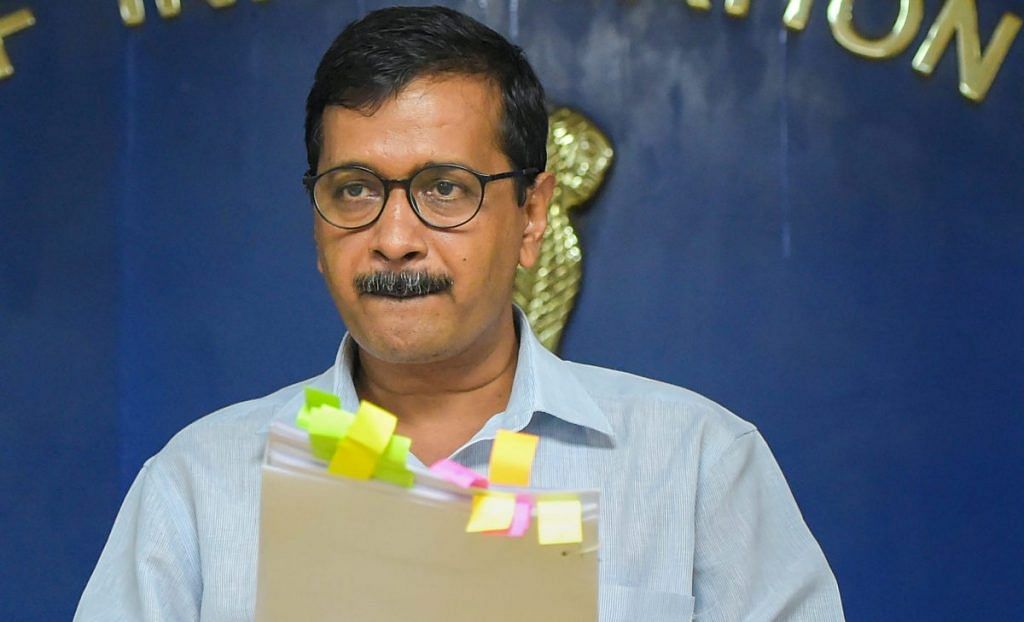The 2019 Supreme Court verdict in the Centre vs Aam Aadmi Party battle over certain ‘services’ in Delhi seems to have tangled up the issue even more.
In July 2018, a constitutional bench of the Supreme Court delivered a major verdict on the status of the National Capital Territory of Delhi. The case arose out of tussles between the Aam Aadmi Party (AAP), which was given a significant popular mandate to govern Delhi in 2015, and the Lieutenant Governor (L-G), who is an appointee of the central government. The legal puzzle was posed by Article 239AA of the Constitution, which entered the Constitution in 1991. The provision gave Delhi an elected legislative assembly and the legislative authority that other states enjoy, with three exceptions (public order, police and land). Yet, the new constitutional arrangement didn’t fully reveal the role of the L-G, who was hitherto the person in-charge of administering Delhi.
The 2018 Supreme Court verdict was a firm endorsement of the position taken by the AAP. Given India’s parliamentary setup, the court rightly held that the L-G was bound to act on the aid and advice of the Council of Ministers. This was the natural consequence of having a democratically elected government. Power and accountability must lie with those who are elected. It also emerged, more specifically, from the structure of parliamentary government that entails the collective responsibility of the council of ministers and from the overlapping of legislative and executive powers, a principle enshrined in the Constitution. Although this resolved some matters, the 2018 verdict did not address specific conflicts between the Delhi government and the L-G. These were to be resolved subsequently by a smaller bench, which was to apply the overarching principle laid down by the constitutional bench.
Also read: SC blow for Arvind Kejriwal’s Delhi govt, rules Centre controls anti-corruption bureau
This was the mandate that led to the Supreme Court verdict this week. Although the Union did attempt, as the Court noted, to re-argue the case that the constitutional bench had already resolved by suggesting that the Delhi government’s legislative authority was not exclusive, this argument rightly received little traction. The court had already resolved this matter, and it was clear that, except for the three above-mentioned items, the Delhi government had exclusive legislative and executive powers regarding the items in List II of the Seventh Schedule. The question is how we should understand the meaning of these three items considering the ongoing conflicts.
There were six disputes before the Supreme Court, although the major controversy was related to “services”. Both sides agreed that the Union could determine which officers are to be posted in Delhi. The question was the allocation and transfer of officers within Delhi, once the central government had determined who would be posted in Delhi. The Delhi government argued that it had this power because of Entry 41 of List II. The Union, on the other hand, claimed that this matter fell outside Entry 41, and therefore, fell within the discretion of the L-G.
The matter seemed somewhat tricky because Entry 41 of List II refers to “State Public Services” and “State Public Service Commission”, and the latter is not present in the National Capital Territory of Delhi. Yet, this awkwardness hardly remains if we attend carefully to the All-India Services (Joint Cadre) Rules, 1972, and the Indian Administrative Service (Cadre) Rules, 1954. The Delhi government rightly argued that a reading of these rules alongside the constitutional framework and prior decisions demonstrates that it has the power over officer postings within the state.
Justice A.K. Sikri’s opinion took this conflict seriously. His framing of the matter is far more persuasive than Justice Ashok Bhushan’s, whose turn to legislative history and reading of Article 239AA led him to conclude that “Entry 41 of List II of the Seventh Schedule of the Constitution is not available to the Legislative Assembly”. But Justice Sikri’s solution leaves much to be desired. To resolve the legal puzzle, he attempted to navigate a middle ground, constructing “a just and fair mechanism” by which the person who has the power to transfer and post officers varies with the rank of the officer. But this attempt simply distracts from the question rather than resolve it. Such a mechanism may or may not be a desirable practical solution, but it does not address the specific legal question at hand.
Also read: L-G has no independent decision-making power: Extracts from SC ruling on Delhi’s power tussle
The Supreme Court’s decision seems entangled in the reading of specific phrases within texts and rules, but it seems surprisingly distant from the brutal fact that Delhi has a representative government. The anomalies in the legal materials are a product of the presence of Union Territories and the fact that they are not states. Indeed, the verdict seems burdened by the fact that Delhi is not a state, and that single fact seems to cast a shadow over the court’s entire effort at reasoning and resolution. It is indeed true that Delhi is not a state, but it is to be regarded as one for several specific questions. That is the only way to reconcile the constitutional text with the democratic form of government that we have. The 2018 verdict was a careful attempt to do so. The 2019 verdict is, alas, an unfortunate application of the logic established by the constitutional bench. One cannot but help ask why, under these legal circumstances, we should bother with having a representative assembly in Delhi.
Madhav Khosla, co-editor of the Oxford Handbook of the Indian Constitution, is a junior fellow at the Harvard Society of Fellows.
